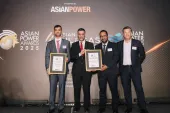PV revisited - A rising sun?
By Hirokazu Suto & William ByunIt was the best of times, it was the worst of times…it was the season of Light, it was the season of Darkness, it was the spring of hope, it was the winter of despair” – and with apologies to Dickens, it was also the year the bottom fell out of the solar PV markets, yet it may also be the year the solar industry may finally have found its long term footing.
In 2011 with a combination of weak markets and market oversupply, PV panel prices plunged by over 30% on average, industry companies failed spectacularly (including Solyndra’s twisting in the US Presidential election spotlight), European Feed-in Tariffs (FiT) suddenly were emasculated and ominously, over 6 GWp of inventory along with significant new production capacity built up to roil prices and the sector going forward.
For many companies, besides bankruptcies, there were production suspensions or shutdowns, industry exits, and generally, a seeking out of possible new strategies. Because Solar PV still relies on FiTs to attain profitability and in effect generate synthetic demand, the reductions in FiT programs in Europe from the global recession at a time when significant new production, especially coupled with surges in aggressively cost-competitive production in East Asia, the production supply side has been hammered thoroughly in its core market premise.
There has been some sprigs of hope of new FiT programs in parts of Asia and other emerging markets, but for the most part, due to small maximum caps on overall program MWs (some as low as 50 MW total!) and even individual project qualification sizes (1 MW project limits), or fragmented local or state-based programs, these new FiT programs were insufficient to absorb the market overhang, much less provide a basis for new sector growth.
Coupled with this grim supply side outlook, is the still unresolved landscape profile on the demand side – whether PV solar is a more “micro” retail oriented distributed play or whether it should aim to expand more for a grid-scaled baseload approach. The retail play helps to build upon a broader more stable potential revenues platform. On the other hand, grid-scaled strategies help in the mobilization of scaled projects financings and scale. In other words, where is the market – is it in persuading late-night TV customer markets or in unleashing national industrial policy lobbyists to massage subsidies?
The Sun Also Rises…
However, 2011 may also have given rise to what may be one of the most transformative events in the sector going forward. The after-effects of Japan Nuclear Crisis of 2011 are only now beginning to reveal significant transformations of the Japanese electric power sector. From the resulting nuclear disaster at Fukushima and the shutting down of all (over 57 GWe) of Japan’s nuclear capacity, within a year, 30% of the country’s entire grid capacity in effect, disappeared.
Scrambling to fill that gap has meant huge jumps in imported coal and fuel as well as a significant spike in carbon emissions, just when Japan was also to roll out its domestic program to replace the Kyoto Protocol.
The need for a longer-term approach became a glaring need. In a country often seen as moribund by inaction, the disaster has also spurred a broad Government and civil society consensus into significant action including real progress on renewables utilization.
Japan’s new solar FiT program became effective from July 2012 with a very robust 42 yen per KwH rate along with tax and other concessions on a 20 year PPA. The utilities are required to purchase production but may raise public tariffs by 15%, thereby spreading the impact across society. While Japan already had roughly 5GWe of capacity before the new FiT, there has been a dramatic surge surrounding July 1 when the new FiT took effect, with over 100 new projects with 1.1 GWe of capacity now under application to be started by 2014 at the latest.
Telling too, the push has been broad-brushed – along with the utilities and local governments (as well as existing solar players such as Sharp, have been a range of corporate Japanese entities from trading firms like Mitsui, Sumitomo, etc., to landowners such as Kintetsu Railways, to consumer electronics firms such as BicCamera and Yodobashi Camera. Softbank has been the biggest developer thus far aggressively pushing solar PV from individual rooftops to large idle plots for grid feed-in.
In other words, along with the social consensus, came the national push into solar PV. Rather than niggle on the FiT details or the semantic small-vs-grid debates, due to the acuity of the demand needs, the emergent solar sector in Japan is pushing ahead on all fronts.
The new Japanese FiT market alone, is a huge one which could help boost the solar sector dramatically. However, more importantly for the solar sector, Japan’s new FiT program and its unfolding reality provides an industry anchor program to help jump-start other countries into embracing solar much as Germany’s initial push did in Europe. Japan’s program provides enough size to help establish operational and logistical systems from a business and corporate perspective, orchestration and refinement of financing protocols specific to scaled solar, and demand pull on the direction of technological innovations, and most importantly, these developments are being done broadly for both small consumer markets and for larger grid markets. Each of these developments alone is significant – together, they could provide the underlying basis for an expansion and replication of such solar model across other emerging markets with constraints on grid expansion.
Expecting the worst of times, there were predictions of the need to retrench and retreat or be drawn into desperate and destructive price battles while simply hunkering down for the so-called ‘better days’ ahead. However, Japan’s new FiT program may be the right catalyst to jump the industry now to a sounder and broader expansion. While FiTs are not in themselves new, the scale and broadness of development spawned by Japan’s FiT program may mark these times as the best of solar times yet.




















 Advertise
Advertise







